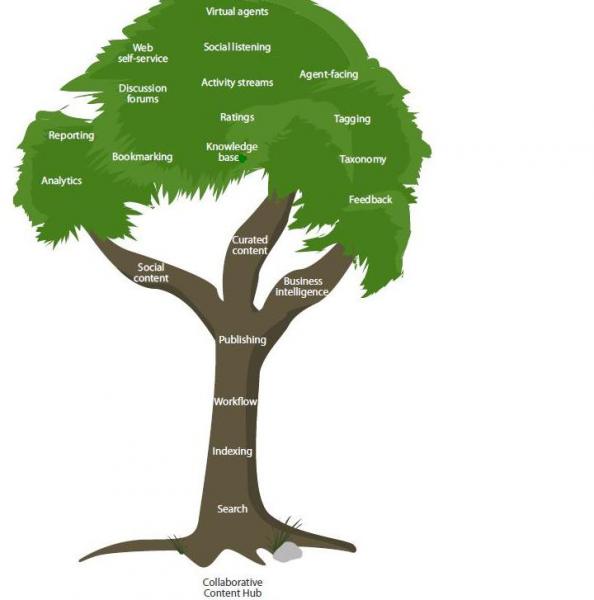The New Knowledge Management: What Does A Collaborative Content Hub Look Like
66% of customers say that “valuing their time is the most important thing a company can do to provide good service.” A knowledge base is typically used to empower agents and customers with answers to customer questions. But traditional knowledge management is a difficult because of the confusion around the term and its checkered reputation.
Instead of a knowledge base, companies should be investing in a collaborative content hub that looks like this:

It includes the following capabilities:
- Easy content capture. You should be able to flag information from any source (email, discussion forum thread, social media interaction) and kick it off to be included in your collaborative content hub.
- Democracy. Everyone within an organization, and customers as well, should be able to recommend information to be included in the content hub.
- Flexible authoring environment. You must be able to create and publish content without arduous workflows. Not all content should be subjected to the same workflows. Some content must be able to be published instantly, for example a service alert. Other content should be able to be routed through review or legal compliance flows.
- Social content: Anyone who comes into contact with content should be able to rate and comment on content.
- Curated and non-curated content. Content should include discussion threads and content residing in other repositories (for example, content management systems, bug databases etc.).
- Collaboration. A certain segment of agents or customer-facing personnel should have the authority to change content and republish it without arduous approvals.
- Proactive, in-process content delivery. Content must be linked, for example, to case management processes, so contextual, personalized content can be pushed to the agent at the right point in the customer service interaction.
- Reports. You need to understand content usage and gaps so you can evolve content in line with customer demand.
- Integration with listening tools and text analytics platforms. You need to stay ahead of the curve in content delivery. To do this, you also need to mine social sites out of your direct control and use text analytics to understand conversations that customers are having about your products and services (for example, social conversations about a particular product issue). You then need to use these insights to generate content and push it out to your customer base to proactively deflect contacts from your contact center.
I see our clients pulling this ecosystem together. Are there any capabilities that you believe should also be included in a content hub?
